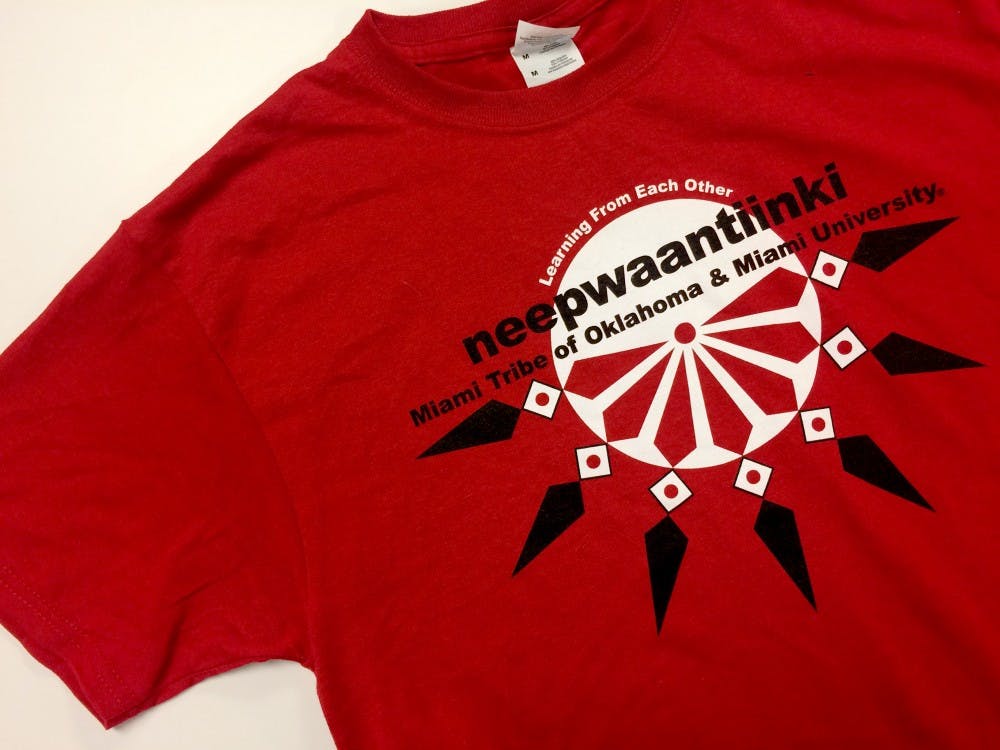MIAMI, Oklahoma -- For over a year and a half, Alyse Capaccio and Julie Olds worked to establish the Myaamia Heritage Logo -- a joint symbol of respect and partnership between the Miami Tribe of Oklahoma and Miami University.
The two women spent hours upon hours reworking designs, sketching out various diamond shapes (inspired by patterns of the traditional Myaamia art form of ribbonwork) and discussing the symbolic implications of the design.
Every decision was made either via email or over a phone call.
Capaccio and Olds finally met, last weekend, in Miami, Oklahoma nearly a year after they initially finished the logo and over two and half years since they began designing in the summer of 2015.
"Our faces are next to each other on the website, so it seems like we should've met before," Capaccio, web design specialist for the university said. "But it was so cool to meet the person I'd been working with. [Olds] is a real artist."
Olds is the cultural resources officer for the Miami Tribe of Oklahoma.
The logo itself is comprised of two geometric diamonds. The black diamond represents respect that will last for the "depth of time." The red diamond represents responsibility and sacrifice. A white diamond connects the red and black sides. Inside the diamond, a single red dot -- symbolizing fire -- stands as the critical metaphor for the relationship between the tribe and the university.
It is a bond that needs tending to, a spark that needs to be supported to stay alive.
"Throughout the design process one thing Daryl Baldwin [director of the Myaamia Center] said that struck me was, 'We don't want to be honored, we want to be respected," Capaccio said.
Laura Driscoll, manager of trademarks and licensing for Miami, spearheaded the initial design process on the university's end when the Miami Tribe Relations department was developing a plan to raise awareness about the tribe in 2015.
The logo itself is a jointly owned trademark between the tribe and the university and legally stamped with a MOA (memorandum of agreement) that ensures the Myaamia Heritage Logo cannot be utilized without the support of both parties.
All royalties made by selling merchandise bearing the logo go toward the Myaamia Heritage Award Program student scholarships, Driscoll said.
From revamping the Miami Tribe relations website, filming publicity videos, creating the Heritage Collection and passing out an infographic about the tribe during the football game when Chief Douglas Lankford did the coin toss, the university is making a more concerted effort to give the Miami community exposure to Myaamia culture.
"This [symbol] means nothing if you don't have the education behind it to back it up," Capaccio said.
Community was one the largest components both Capaccio and Olds hoped to stress in both creating the logo and establishing a symbol that could carry on the legacy of the Myaamia language and cultural revitalization.
Capaccio said that making the visit to Oklahoma gave her a new understanding of and appreciation for what community means for Myaamia people. In addition to meeting Olds in person, Capaccio was also able to participate in the tribe's stomp dance.
"You hear everyone talk about the community and I thought, 'Oh, yeah, that's a cool concept," Capaccio said. "But then I was in the stomp dance, and it felt like a kinesthetic lesson in community, because you need everyone and whatever you do affects everyone else."

